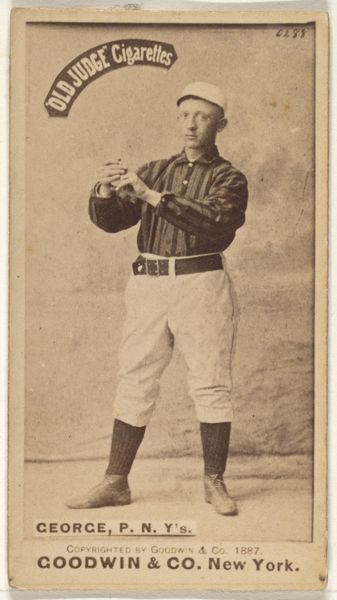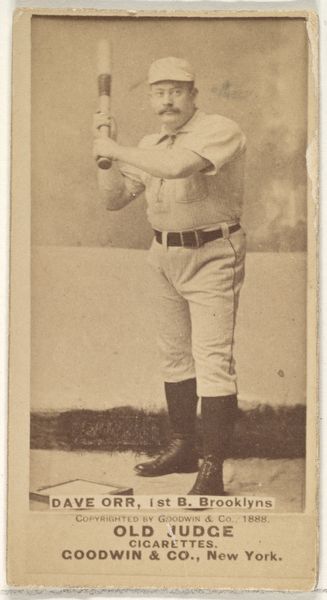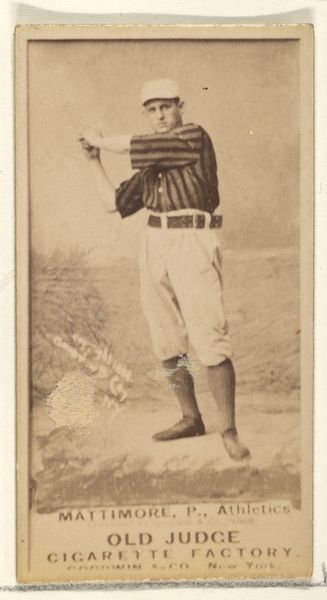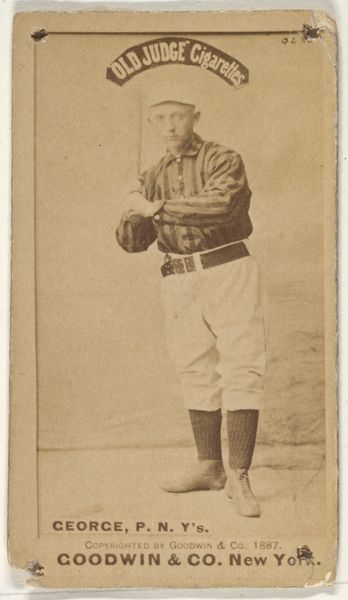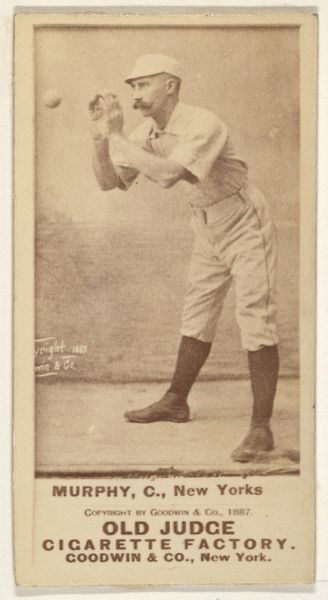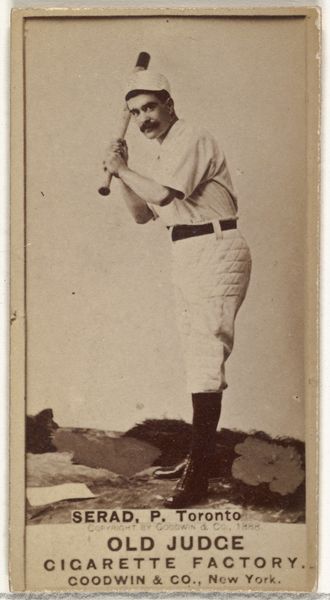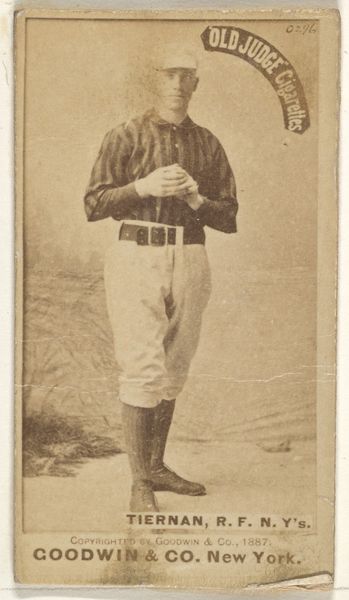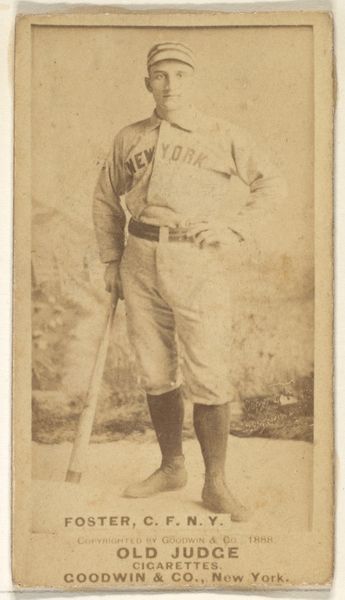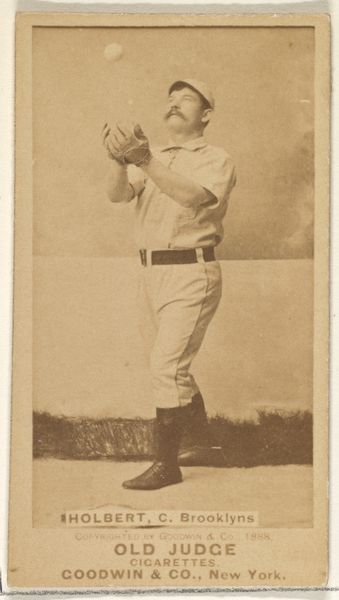
Bill George, Pitcher, New York, from the Old Judge series (N172) for Old Judge Cigarettes 1888
0:00
0:00
drawing, print, photography
#
portrait
#
drawing
# print
#
baseball
#
photography
#
men
Dimensions: sheet: 2 11/16 x 1 3/8 in. (6.9 x 3.5 cm)
Copyright: Public Domain
Editor: Here we have an 1888 portrait titled "Bill George, Pitcher, New York" from the Old Judge series for Old Judge Cigarettes, produced by Goodwin & Company. It’s a photographic print, quite small… almost the size of a trading card. The baseball player looks like he’s about to pitch. It's fascinating how these objects were basically advertisements. What catches your eye in this piece? Curator: What's fascinating to me is the very means of production itself. Consider the intersection of industrial photography, commercial enterprise, and leisure culture embodied by these cards. Old Judge Cigarettes, a product born from the tobacco industry's own exploitation of labor and land, utilized these images to cultivate a specific type of consumer base: working-class men aspiring to a new form of masculine identity intertwined with baseball. How does this contrast to how portraiture functioned traditionally? Editor: I see your point. It's not some wealthy patron commissioning a painting, but a company leveraging an image for profit. Does the photograph itself have any artistic merit, considering its intended purpose? Curator: Precisely. Its artistry exists in its function. The seemingly simple photographic process masks the complexities of labor involved - from the posing of the player to the mass printing and distribution of these cards inserted in cigarette packs. It also challenged the older hierarchies of the art world as the means of art shifted from hand-made works to manufactured goods that had democratic appeal through their easy accessibility. What is he, the player, “selling” in your opinion? Editor: The sport, the cigarettes, aspiration, a certain idea of the everyman made a hero, perhaps. Looking at it this way reveals so much about the economic and cultural landscape of the time. Thanks for broadening my perspective. Curator: It’s a prime example of how studying art through the lens of materiality and production processes gives us a much deeper understanding of society as a whole.
Comments
No comments
Be the first to comment and join the conversation on the ultimate creative platform.
